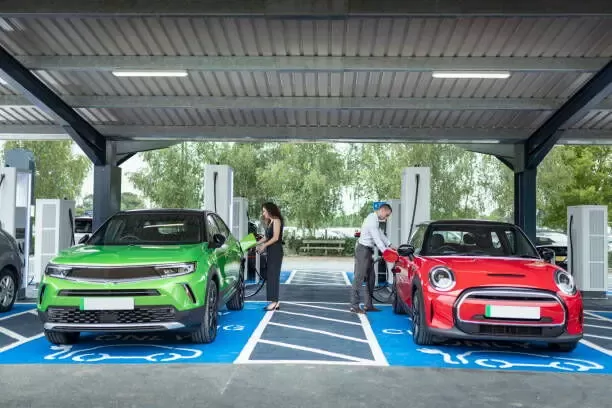Notifications

6 minutes, 13 seconds
-11 Views 0 Comments 0 Likes 0 Reviews

Powering Your EV Journey: Understanding AC and DC Charging
As one of leading professional EV charger manufacturers based in China, Topper Company specializes in designing, developing, and producing high-quality electric vehicle charging station equipment. With years of industry experience and a strong commitment to innovation and reliability, we provide comprehensive total solutions tailored to meet the diverse needs of electric vehicle owners, businesses, and public infrastructure projects.
In the fast-changing world of electric vehicles (EVs), a common question among new and curious drivers is: What exactly is the difference between AC and DC charging?
To answer that, we first need to understand how electricity flows. Alternating Current (AC), the electricity that powers our homes and businesses, flows in a wave-like pattern, periodically reversing direction. This is the type of power delivered through the grid—lighting your home, running appliances, and powering your EV charger.
Direct Current (DC), on the other hand, flows steadily in one direction, like water moving through a pipe. Batteries—whether in smartphones, laptops, or EVs—store energy as DC. So, when you charge your EV, the AC power from the grid must eventually be converted to DC to charge the battery.
This key difference—where and how that conversion happens—shapes the distinction between AC and DC charging, affecting charging speed, convenience, and cost.
At the core of every EV is a large battery that stores and delivers DC power to the motor. Since your home and the power grid supply AC electricity, your car must convert AC to DC before the battery can be charged.
This conversion happens inside the vehicle via the onboard charger, which manages the power safely to protect the battery.
When you plug your EV into a typical home charger or public Level 2 station, you’re using AC charging.
Why AC Charging Works Well for Daily Use:
Onboard Conversion: Your car’s onboard charger converts AC to DC, so no extra equipment is needed beyond your charger and cable.
Safe Overnight Charging: Although slower, AC charging is perfect for topping up your battery while you sleep.
Lower Installation Costs: Setting up an AC charger at home is straightforward and affordable.
Flexibility: AC chargers are widely available—in homes, workplaces, and public parking lots.
Typical AC Charging Speeds:
Level 1 (120V): Adds about 3-5 miles of range per hour—slow but convenient.
Level 2 (208-240V): Adds about 12-40 miles of range per hour, depending on your vehicle’s onboard charger.
For quick energy boosts—especially on the road—DC fast charging delivers high power by converting AC to DC within the charging station itself, bypassing the car’s onboard charger.
Benefits of DC Fast Charging:
Rapid Charging: Delivers 50 kW to 350 kW, adding 100+ miles in 20–30 minutes.
Ideal for Travel: Found at highways, rest stops, and commercial hubs.
Supports Heavy Use: Perfect for fleets and commercial vehicles needing minimal downtime.
Technical Notes:
Operates at higher voltages (400V to 800V+).
Uses special connectors like CCS, CHAdeMO, or Tesla Superchargers.
Considerations:
Installation is costly and complex.
Frequent fast charging can impact battery longevity.
Mostly located on travel routes—not typical for daily home charging.
AC Charging: Grid AC → Your home/public charger → Onboard charger converts AC to DC → Battery stores energy.
DC Charging: Grid AC → Fast charger converts AC to DC → DC flows directly to battery, bypassing onboard charger → Faster charge.
At Home: AC charging offers convenience and cost-effectiveness for daily use.
At Work/Public Spots: Level 2 AC chargers provide a good balance of speed and availability.
On the Road: DC fast chargers offer the quick turnaround needed for longer trips.
Advancements continue: higher-capacity onboard chargers, ultra-fast DC stations, smart charging networks balancing grid loads, and bidirectional charging enabling EVs to supply power back to homes or grids.
Understanding AC and DC charging empowers you to make the best choices for your EV lifestyle. Slow and steady AC charging keeps you ready every day, while DC fast charging gives you speed and convenience on the go. Together, they build a flexible, reliable charging network powering a cleaner, greener future.Know more about Google SEO Directory
China EV Chargers EV Charger Manufacturer EV Charging Solutions

